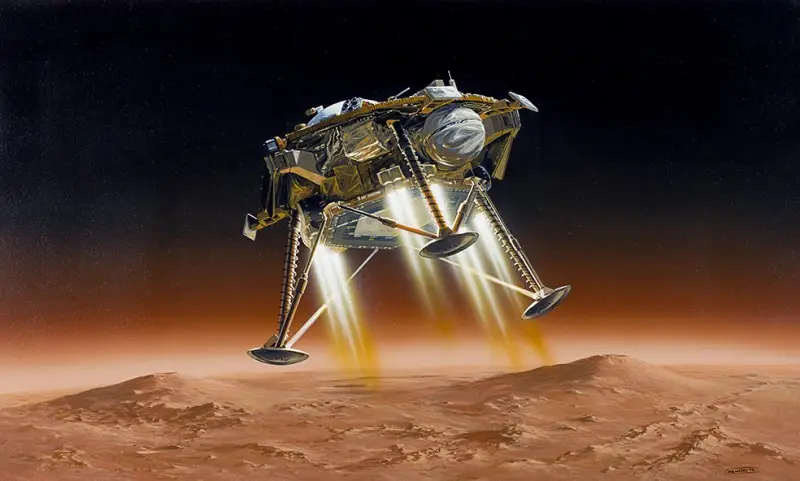NASA has long been at the forefront of space exploration, constantly pushing the boundaries of human knowledge and technological advancement. However, even the most meticulously planned missions can encounter setbacks. One such challenge arose in 2016 when NASA identified a Mars spacecraft leak in the InSight lander, which was originally slated to launch that year. Due to this unexpected technical issue, the mission was delayed until 2018, allowing engineers sufficient time to assess, fix, and re-test the spacecraft to ensure a successful mission.
The Mars InSight Mission: An Overview
The InSight (Interior Exploration using Seismic Investigations, Geodesy and Heat Transport) lander is a NASA mission specifically designed to study the interior of Mars. Unlike previous Mars rovers that explored the planet’s surface, InSight’s goal is to gather information about the deep interior of the Red Planet. This information will help scientists understand how rocky planets like Mars, Earth, and even exoplanets form and evolve.
The mission was initially scheduled for launch in March 2016, with a planned arrival on Mars in September of the same year. However, during routine testing, NASA engineers discovered a Mars spacecraft leak in one of the key scientific instruments—the Seismic Experiment for Interior Structure (SEIS). This instrument, developed by the French space agency CNES (Centre National d’Études Spatiales), was crucial for detecting and analyzing seismic activity on Mars, making it an essential component of the mission.
Understanding the Mars Spacecraft Leak
The leak was detected in the vacuum-sealed chamber of the SEIS instrument, which was designed to function in the harsh conditions of Mars. The instrument needed to be hermetically sealed to ensure that it could detect minute seismic waves without interference from external pressure fluctuations. However, tests revealed that the chamber could not maintain the required vacuum, posing a serious risk to the mission’s scientific objectives.
NASA engineers and CNES scientists worked extensively to diagnose the cause of the Mars spacecraft leak. After several rounds of testing, they determined that the issue was due to a faulty weld in the vacuum chamber, which was not maintaining the necessary pressure. Given the complexity of the instrument and the need for absolute reliability, NASA made the difficult decision to delay the launch rather than risk mission failure.
NASA’s Solution and Fixing the Issue

To rectify the problem, CNES and NASA engineers redesigned the vacuum chamber, incorporating more rigorous welding techniques and enhanced testing protocols. The new chamber underwent multiple rounds of vacuum tests, ensuring that the problem was completely resolved. By mid-2017, NASA confirmed that the Mars spacecraft leak had been successfully fixed, and the InSight lander was once again ready for launch.
Despite the delay, the revised timeline actually worked in favor of the mission. The next optimal launch window for a Mars mission occurred in 2018, allowing NASA extra time to conduct additional system checks and reinforce mission readiness. This meticulous approach exemplifies NASA’s commitment to mission success over strict adherence to schedules.
The 2018 Launch and Scientific Objectives
NASA successfully launched the InSight lander aboard an Atlas V rocket on May 5, 2018, from Vandenberg Air Force Base in California. It was the first interplanetary mission launched from the U.S. West Coast, marking a historic milestone. The lander traveled through space for nearly seven months before reaching Mars on November 26, 2018, executing a precise landing in the Elysium Planitia region.
Upon landing, InSight deployed its solar panels and began its primary mission of investigating the Martian interior. The SEIS instrument, now fully functional and leak-free, started collecting seismic data, measuring “Marsquakes” and providing unprecedented insights into the planet’s internal structure. The mission also included the Heat Flow and Physical Properties Probe (HP3), designed to measure heat coming from Mars’ interior, and the Rotation and Interior Structure Experiment (RISE), which helped scientists understand Mars’ core.
The Importance of Fixing the Mars Spacecraft Leak

The success of the InSight mission demonstrated the importance of identifying and addressing spacecraft issues before launch. The Mars spacecraft leak could have jeopardized the mission’s primary scientific goals, but NASA’s decision to delay the launch and thoroughly fix the issue ensured mission success. This highlights NASA’s rigorous testing procedures and its unwavering commitment to quality and precision in space exploration.
Future Implications and Lessons Learned
The InSight mission’s success set a strong precedent for future planetary exploration. The detailed investigation of the Mars spacecraft leak provided valuable engineering insights that can be applied to upcoming missions, such as the Mars Sample Return mission and potential human exploration of the Red Planet. The lessons learned from this experience reinforced the need for extensive pre-launch testing, high-quality manufacturing standards, and adaptability in addressing unforeseen challenges.
Conclusion
NASA’s journey to overcome the Mars spacecraft leak and ensure the InSight lander’s successful launch in 2018 is a testament to the agency’s dedication to space exploration. By taking the time to resolve technical issues and implement a robust solution, NASA preserved the mission’s scientific integrity and ensured valuable contributions to our understanding of Mars. As we look to the future, this mission serves as a reminder of the importance of perseverance, precision, and the relentless pursuit of knowledge in the vast expanse of space.



